Affiliate disclosure: This post may contain affiliate links. Please see our Privacy Policy.
The fact that old-fashioned parsnip wine exists just goes to show you that yes, you can ferment just about anything.
Parsnips are sweet and flavorful and create a warm, full-bodied wine during the winter when other fruits are hard to come by.
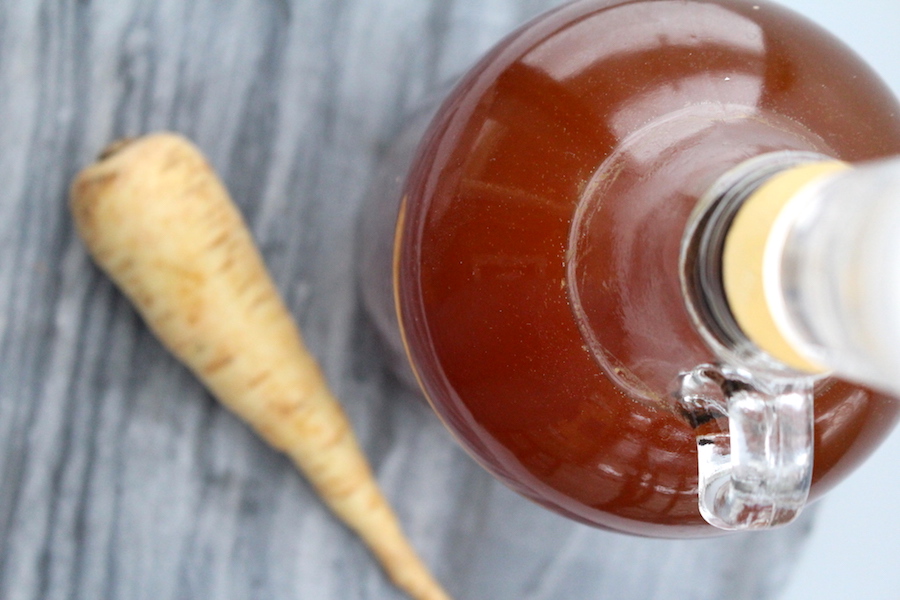
I came across a recipe for parsnip wine in the book Preserve It! and I just had to try it. I’ve had great success making other recipes out of this book, including canned whole oranges in syrup which were a huge hit with the kids.
Unlike many wine recipes, parsnip wine only uses the cooking water from the parsnips, leaving you free to serve up the actual vegetables for dinner. Just about every other wine I’ve made has you leave the fruit/vegetables in the batch through the whole primary and then compost it afterward. This one’s a bit more utilitarian and allows you to use the parsnip cooking water that would otherwise just be poured down the sink.
Start by chopping the parsnips into a large saucepan and then bring the pot to a boil on the stove. Cook the parsnips about 10 minutes, until just tender. I then served them to my little ones with a bit of butter, reserving the cooking juice for the wine.
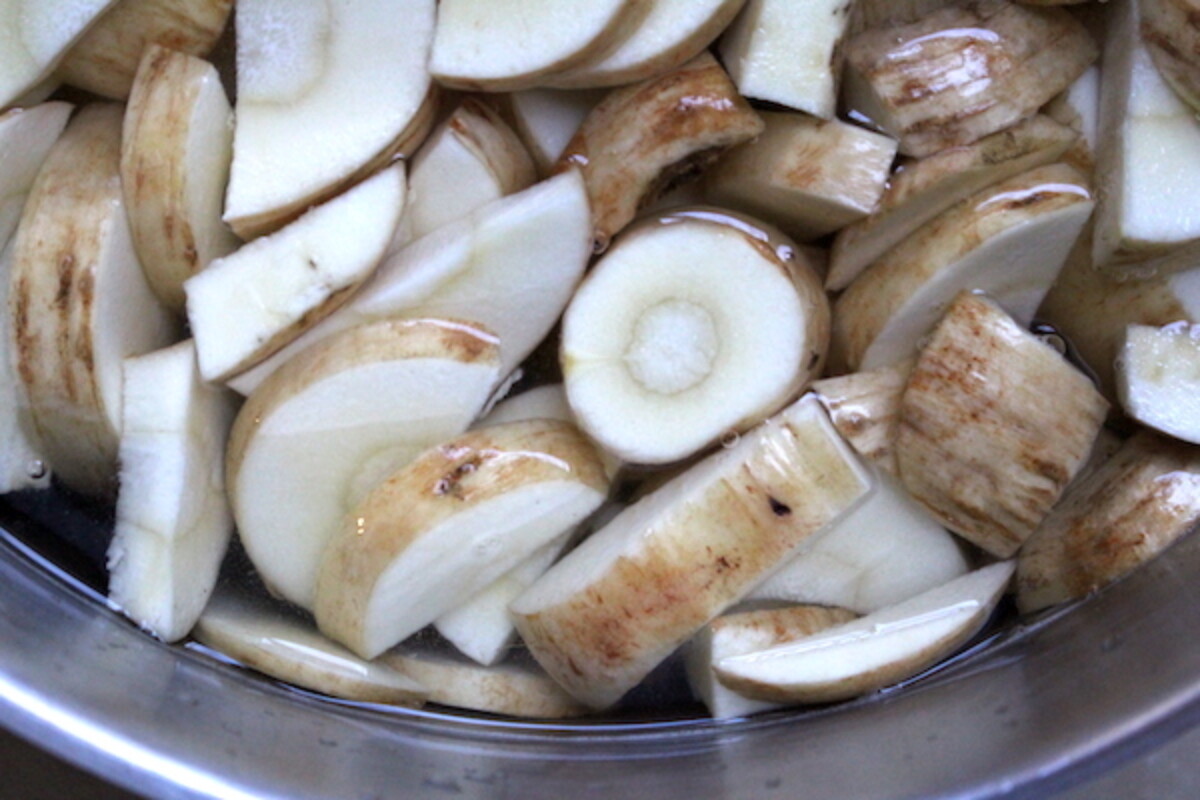
Generally, parsnips are sweetest and best tasting if they’re left in the ground late into the fall or early winter so they’re exposed to a few hard frosts. If you’re not growing them yourself, make this wine mid-winter or in the early spring with parsnips that have been in cold storage for a few months. That’ll give them time to convert some of the starches to sugars.
Beyond the parsnips, this recipe includes lemon slices and raisins, but both of those are filtered out before the fermentation begins. The instructions call for boiling raisins in a bit of water to extract their juice.
More often than not winemaking recipes have you just toss the raisins in the fermenter and filter them out after the primary, just like the fruit. Instead, I’m just filtering a bit of raisin tea basically…
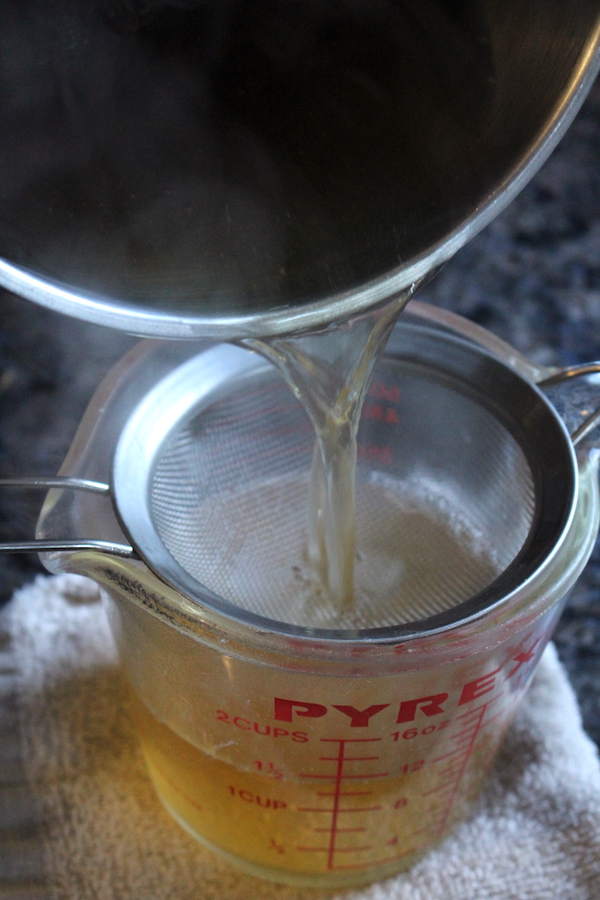
Once you have a filtered raisin extract, add sugar and lemons to the raisin water. The sugar/lemon/raisin water mixture is then simmered for 45 minutes on the stove, which causes the sugars to carmelize in the pot, resulting in more depth of flavor in the finished wine.
Be careful as you’re boiling the sugar syrup mixture, as it will begin to foam up as it gets close to finished. Watch it closely once it begins foaming, after about 30 to 35 minutes of cooking.
Simmer for another 5 to 10 minutes past the foaming point, watching for boil overs. Also, be careful not to let this syrup burn, and if you smell even the slightest hint of smoke remove it from the stove immediately. The idea is to get a bit of caramelization, but no burned flavors.
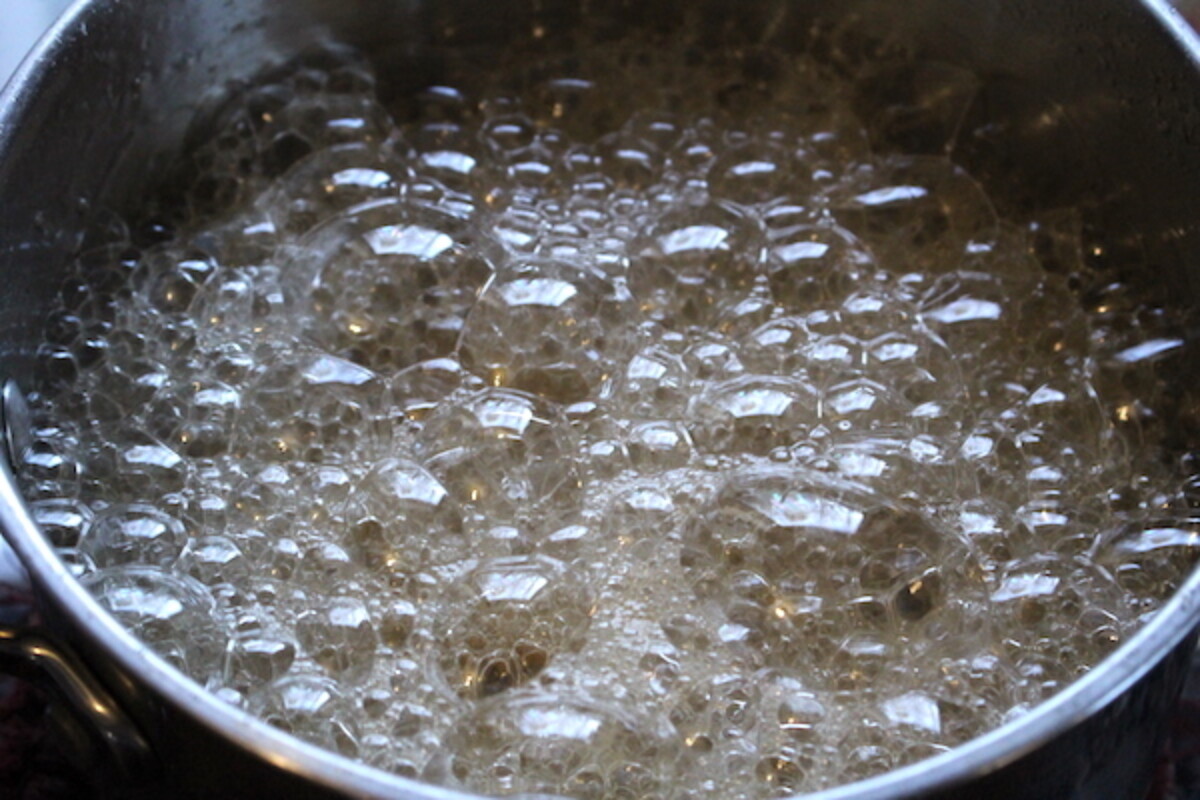
Once the bubbles come down and the syrup cools a bit, go ahead and take the lemon slices out of the caramelized raisin/sugar syrup. At this point, you basically have candied lemon slices, which is a wonderful way to preserve a lemon if you dehydrate them a bit into a sweet candied lemon slice.
There are only a few of them though, and my kids just nibbled them as soon as they cooled.

The last thing of note in this recipe is the amount of sugar. Most fruit wine recipes call for 2 1/2 to 3 pounds of sugar, largely because they’re extracting a considerable amount of sugar right from the fruit. This recipe calls for roughly 3.4 pounds (6 3/4 cups) which shows that you’re not really actually pulling that much in the way of sugar from the parsnips.
Parsnips only provide the flavor in this recipe, they’re not really providing much fermenting fuel. Even still, the recipe notes that parsnip wine doesn’t really taste like parsnips, but instead tastes like full-bodied dry wine with high alcohol content.
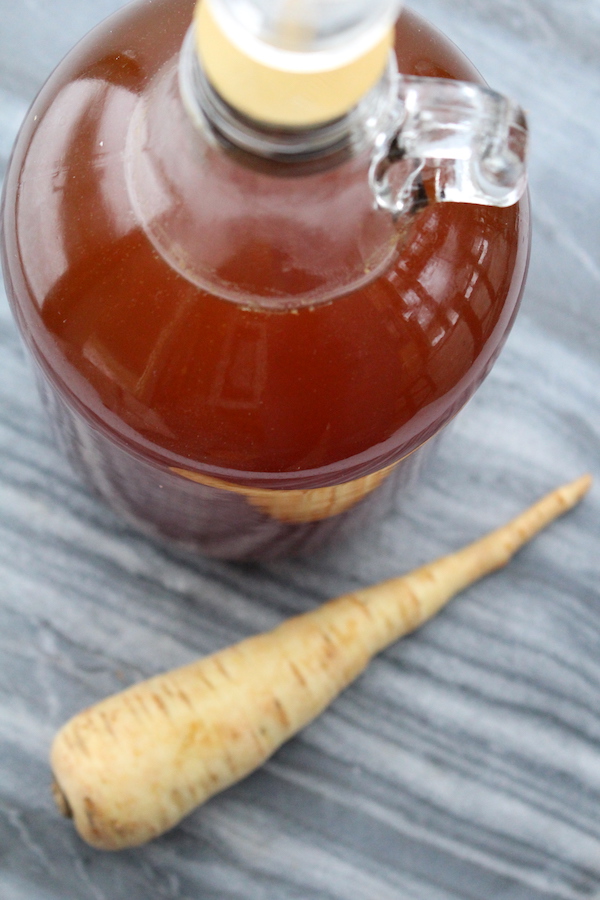
All the recipes I can find are very specific that the parsnips are to be washed but NOT peeled. That makes me think that there must be something in the parsnip peels specifically that is contributing flavor to the wine.
The peels do tend to have a stronger flavor than the inside, and that could be it. Or it could be something about the starch in parsnips that helps give the wine more body and nourishes the yeast to bring the alcohol level up.
At this point, I really can’t say. The ferment is bubbling away in the primary at the moment, so I can’t say for certain what it tastes like.
I’ll report back in when we get this one bottled up. I’m anxious to know how this one tastes…
Thus far, I’ve read that parsnip wine tastes like all manner of things from a good chardonnay to a sweet marsala wine to whiskey. The most common description is a sweet wine with earthy undertones, a bit like Medeira. I’ll let you know in a few months…
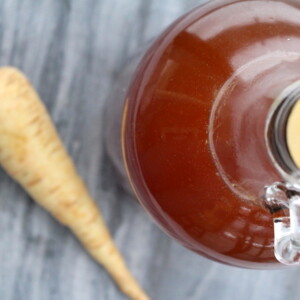
Parsnip Wine
Ingredients
- 4 lbs parsnips, washed but not peeled
- 2 1/4 lbs raisins
- 6 3/4 cups sugar, roughly 3.4 lbs
- 1 lemon, sliced
- 1 wine yeast
- 1 tsp yeast nutrient
- 1 tsp Pectic Enzyme
Instructions
- Slice the parsnips and add them to a saucepan with about 1 gallon of water. Bring the water to a boil and cook the parsnips for 10-15 minutes, until just tender but not mushy. Strain and reserve the cooking liquid, keeping the parsnips for another use.
- In a separate saucepan, bring raisins to a boil with 1 quart of water and cook for about 5 minutes. Strain out the raisins for another use (like oatmeal), and reserve the cooking liquid.
- Put the raisin waterback in a saucepan with the sugar and sliced lemon. Bring to a boil over high heat, and then reduce to a simmer. Simmer on low for about 45 minutes, until the sugar mixture starts to foam considerably as it changes to a syrup.
- Remove the lemon slices from the syrup, and combine the raisin syrup and the parsnip water together. Allow the mixture to cool to room temperature, about 70 degrees.
- While the mixture cools, bloom the packet of yeast by dissolving it in about 1/4 cup of water. Allow the yeast to stand until the parsnip syrup is at room temperature.
- Pour the parsnip/syrup mixture into a primary fermentation vessel, and add the yeast, yeast nutrient and pectic enzyme.
- Allow the mixture to ferment in primary for about 7 to 10 days, until the bulk of the fast fermentation has concluded.
- Rack the wine into a secondary fermenter using a sterilized siphon and seal with a water lock. Allow the wine to ferment in secondary for about 6 months, until fermentation is complete and the wine has cleared.
- Bottle the wine in wine bottles and cork. Store the wine for 6 months before drinking.
Nutrition
Nutrition information is automatically calculated, so should only be used as an approximation.
Other Parsnip Wine Recipes
After I started this batch, I actually found a number of other parsnip wine recipes and all are quite different from each other. That may explain why the descriptions of the taste of parsnip wine vary so much from person to person. Everyone’s drinking a completely different wine….
The book Old-Time Recipes for Home Made Wines Cordials and Liqueurs from 1922 includes three different recipes for parsnip wine. They vary between 7 1/2 pounds of parsnips to a gallon, down as low as 1 pound.
One recipe includes hops, and another has you cask the wine for over a year. I’ve included them all below in case you want to try a different variation…
Parsnip Wine No. 1 ~ To six pounds of parsnips, cut in slices, add two gallons of water; boil them till they become quite soft. Squeeze the water out of them, run it through a sieve, and add to every gallon three pounds of loaf sugar. Boil the whole three-quarters of an hour, and when it is nearly cold, add a little yeast. Let it stand ten days in a tub, stirring it every day from the bottom, then put it in a cask for twelve months; as it works overfill it up every day.
Parsnip Wine No. 2 ~ Take one pound of parsnips cleaned and sliced. When the water boils, put in the parsnips, and boil till they are perfectly tender; drain through a sieve or colander without pressing. Immediately return it to the copper with fourteen pounds of loaf sugar; it will soon boil, being already hot, and what drips from the sieve may be added afterwards; one and one-half ounces of hops, and boil it two hours. Ferment with yeast; let it stand four days to work in a warm place; and tun and paste paper over. It is most likely it will work up and burst the paper, which must be renewed. It may be cleared with isinglass, but will not require any brandy.
Parsnip Wine No. 3 ~ Take seven and one-half pounds of sliced parsnips, and boil until quite soft in two and one-half gallons of water; squeeze the liquor well out of them, run it through a sieve, and add three pounds of coarse lump sugar to every gallon of liquor. Boil the whole for three-quarters of an hour. When it is nearly cold, add a little yeast on toast. Let it remain in a tub for ten days, stirring it from the bottom every day, then put it into a cask for a year. As it works over, fill it up every day.
More Homemade Country Wine Recipes
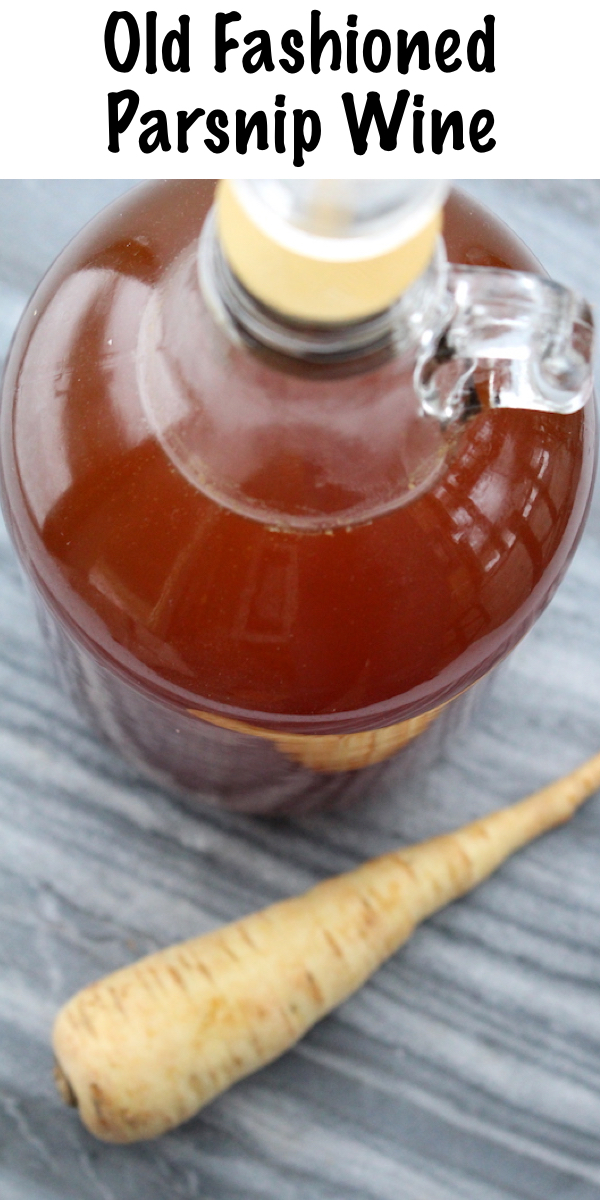



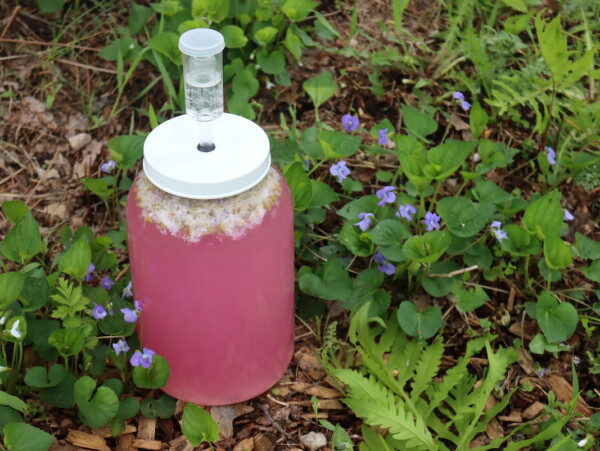










Thanks for your lovely website. It is full of fascinating things that I won’t have the time to try but will dream of doing so.
I just came across parsnip wine in Dylan Thomas’s “A Child’s Christmas in Wales” and had to look it up. I will give it a mention in my Christmas book that I’ve just started writing.
That’s wonderful. We’re so glad you’re enjoying the blog and hope that one day you will even try a few things.
No clues as to ratio of parsnips to lemons, raisins and sugar. Luckily there are some parsnip wibe recipes under this one on the site so if I try this I will try one of them.
If you scroll to the bottom of the post you should see a recipe card with the exact measurements.
Some country wine recipes move the wine interested a second demijohn to condition – have you had any problems leaving it in the first demijohn with the sediment?
The wine should be racked into a secondary fermentation vessel after 7 to 10 days of fermentation leaving behind any sediment. Otherwise, you can have some off-flavors from the sediment.
Thanks, I did rack off after the primary fermentation but there’s a small amount of sediment which formed as the wine cleared over the following weeks.
Ok, that makes sense. You can always rack it again if you wish to get rid of the remaining sediment.
I love the recipe and your blog. Thank you for taking the time in your busy family life to share your treasures recipes. Thank you!
You’re very welcome! So glad that you’re enjoying them.
Why would you write a recipe for something that wasn’t finished?
Ha…because often things I make take years to complete, and I’m writing more about the process. This one though, I made about 2 years ago and it is finished now, including bottle aging…I just never got around to updating the article. It’s delicious, though quite sweet.